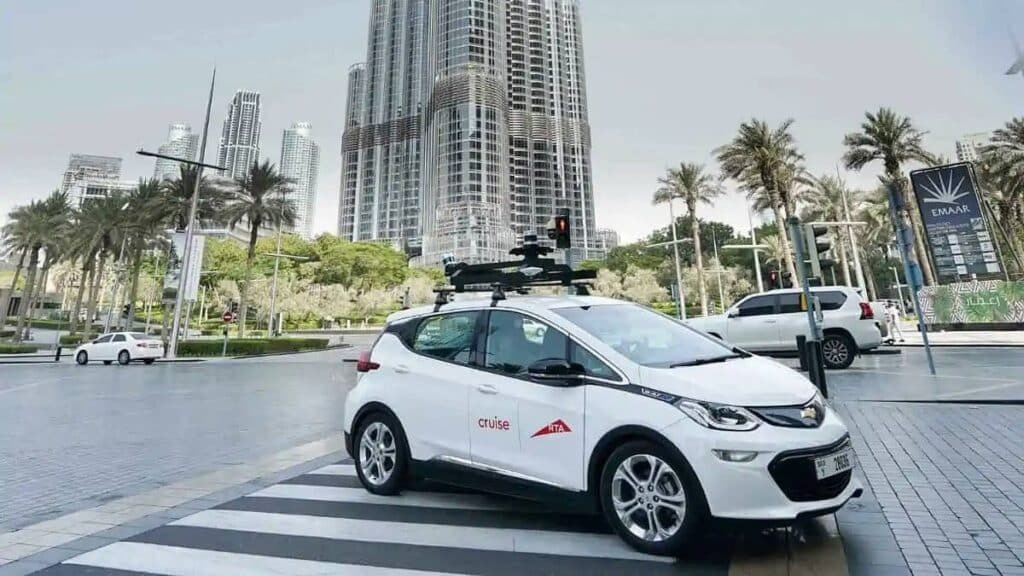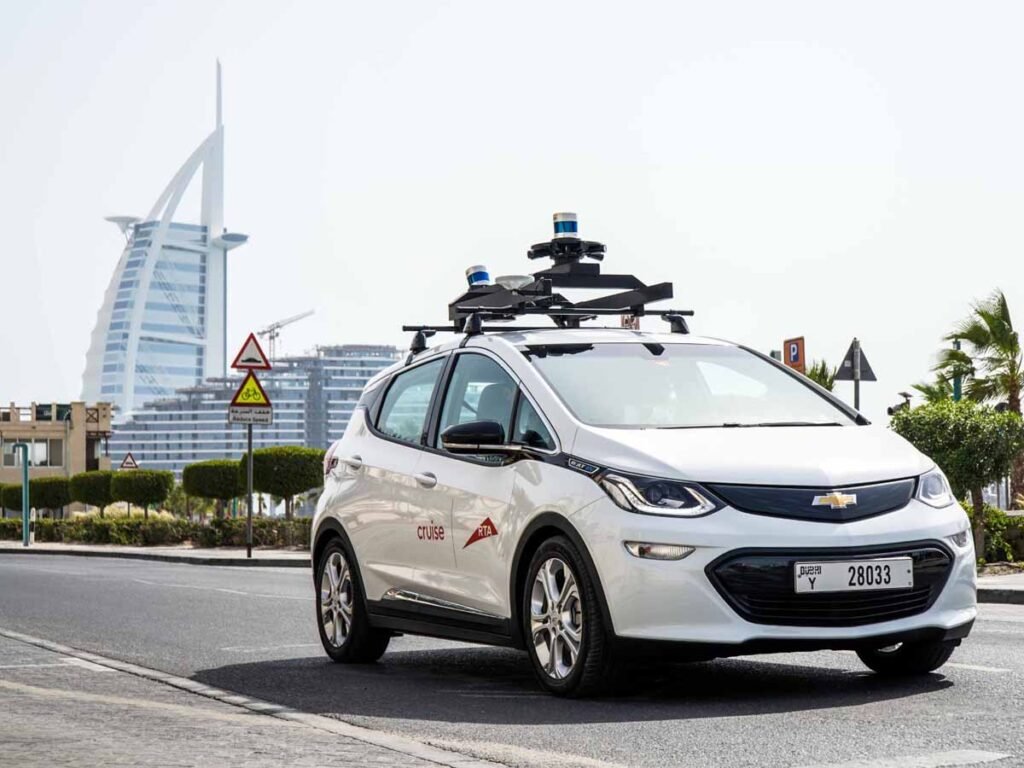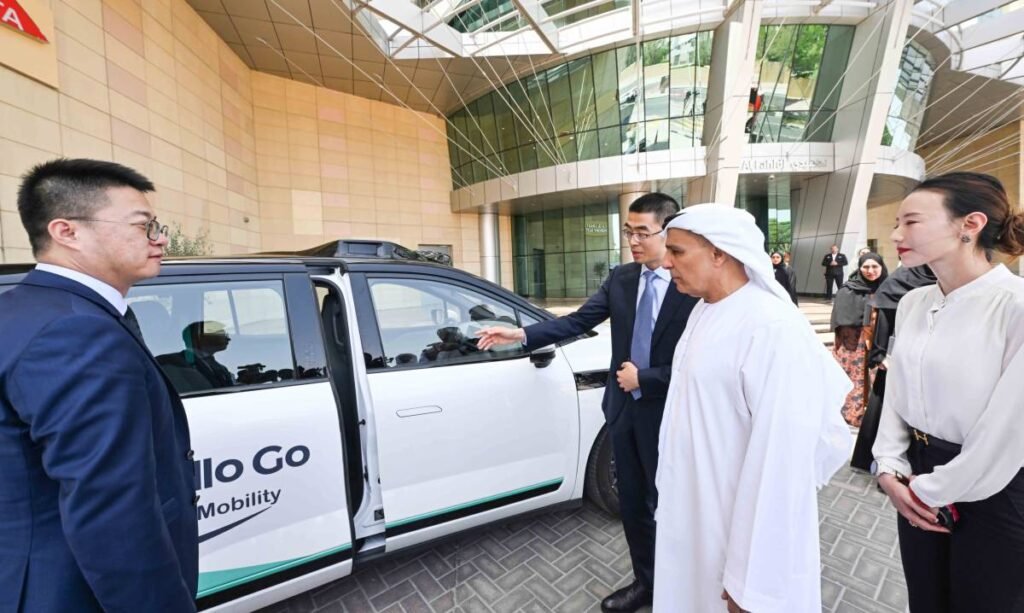Dubai, the city that seemingly lives in the future, is preparing to roll out one of its most ambitious transport initiatives yet—driverless taxis. With a clear strategy to become a global pioneer in autonomous mobility, the emirate is expected to begin its rollout of self-driving cabs by late 2025, with full-scale public operations forecasted for 2026. This monumental shift in how we commute is part of Dubai’s wider Autonomous Transportation Strategy, which aims to make 25% of all transport in the city autonomous by 2030.
The Road to Autonomy Begins in 2025
Dubai’s plan doesn’t start with simply unleashing autonomous cars onto its roads. In fact, the process is carefully phased. The first wave—around 60 self-driving taxis—will hit Dubai streets by Q4 2025, but not to pick up passengers. Instead, these vehicles will carry out intricate mapping, scanning, and route data collection. Think of it as the AI equivalent of a London cabbie memorising every street and alley before earning their licence.
This data will help the vehicles navigate the city with the same or greater accuracy than human drivers. Once this foundational layer is complete, the pilot testing phase will kick in. This involves up to 65 designated areas across Dubai where controlled tests will assess the technology’s real-world performance under stringent road safety standards set by the RTA (Roads and Transport Authority).

Who’s Driving the Innovation?
Three major players are currently involved in bringing this futuristic vision to life:
- Uber: The American ride-hailing behemoth is collaborating with RTA to deliver robust pilot programmes and strategic support.
- WeRide: A cutting-edge autonomous driving tech company from China, known for successful operations in urban environments.
- Baidu: China’s tech titan, through its Apollo Go division, will deploy 50 driverless RT6 taxis in Dubai by the end of 2025. They plan to scale to 1,000 vehicles by 2027.
It’s worth noting that Baidu’s Apollo Go service has already clocked over 150 million km of autonomous driving across 10 cities in China, showcasing an impressive track record.
What Will These Driverless Taxis Look Like?
Dubai’s autonomous fleet will debut with the Baidu RT6 model—sleek, compact, and loaded with 40 high-tech sensors and detectors. These aren’t just for show; they form the crux of real-time decision-making and obstacle avoidance.

The RT6 features:
- Advanced LIDAR systems
- HD cameras
- AI-powered computing units
- Voice and gesture control for passengers
These features combine to deliver maximum safety, comfort, and reliability—all while eliminating the need for a human driver.
When Can You Hail a Driverless Taxi?
While the mapping and testing phases begin in 2025, public hailing won’t likely begin until early 2026. The official full-scale deployment will roll out progressively, starting with limited routes and eventually covering large parts of the city.
Key milestones:
- Late 2025: Mapping and route learning phase begins.
- Early 2026: Limited public rollout begins.
- 2027: Target of 1,000 autonomous taxis on the road.

Where Will They Operate?
The initial pilot zones—65 in total—will be spread across major Dubai districts. These areas are carefully chosen for their traffic density, complexity, and strategic importance.
Likely early zones include:
- Downtown Dubai
- Dubai Marina
- Jumeirah Lakes Towers (JLT)
- Business Bay
While the full list hasn’t been disclosed, the objective is to ensure a balanced urban deployment that captures a wide range of use cases—from tourist-heavy areas to commercial hubs.

Why Is Dubai Investing in Driverless Taxis?
The push toward autonomous vehicles aligns with the UAE’s macro goals of becoming a global tech and innovation hub. According to the Dubai Autonomous Transportation Strategy, the impact of driverless mobility will be substantial:
Economic Gains
- AED 22 billion in projected savings and revenue
- AED 900 million reduction in transport costs
- AED 1.5 billion decrease in environmental pollution
- AED 18 billion in improved productivity and efficiency
Societal Benefits
- 12% drop in traffic-related accidents
- 13% increase in road productivity
- Less traffic congestion
- Reduced human error
Environmental Impact
- Cleaner roads
- More energy-efficient vehicles
- Optimised traffic flow
The Role of AI and Big Data
Autonomous taxis won’t just be robots on wheels. Each vehicle will be a node in a vast smart mobility ecosystem, feeding data back into Dubai’s urban transport grid. This allows for:
- Real-time route optimisation
- Predictive traffic management
- Efficient fleet distribution
- Personalised ride experiences
Challenges Ahead
Despite the excitement, the project does face several hurdles:
- Public acceptance of driverless tech
- Ensuring 100% safety in diverse conditions
- Data privacy and cyber security
- Seamless integration with existing public transport
However, Dubai’s proven record of integrating bold innovations—from AI police bots to flying taxis—suggests that these challenges are well within reach.

Looking Forward
By the time Expo City Dubai fully matures as a smart district and tourism hub, we could see entire zones dedicated to autonomous-only transport. Imagine arriving at a concert or mall and stepping straight into a fully autonomous, voice-controlled taxi that knows where you’re going and how to get there—with zero human involvement.
With Uber, Baidu, and WeRide behind the wheel (metaphorically), Dubai is set to become the first city outside of China to host large-scale driverless taxi services. That’s not just a UAE-first—that’s a world-first.



